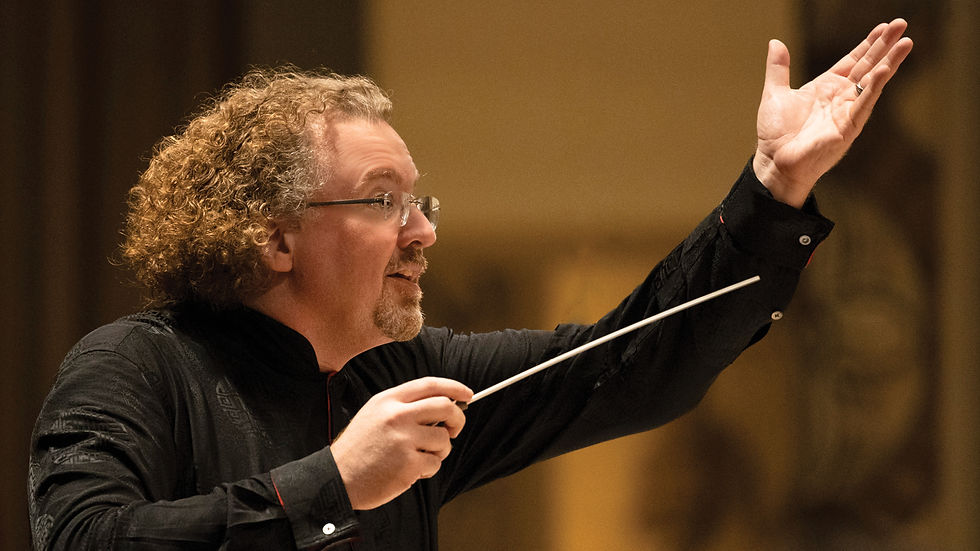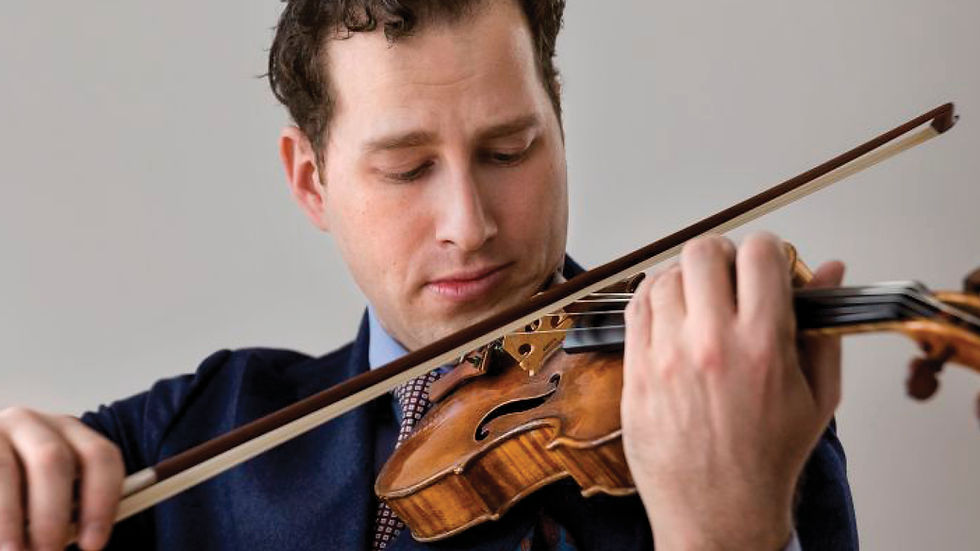Program Notes: Debussy and Ravel
- SLSO
- Oct 27, 2020
- 4 min read
Updated: Feb 3, 2021
By Tim Munro
Friday, October 30, 2020 at 11:00am
Thursday, November 5, 2020 at 7:30pm
Allegra Lilly, harp Jennifer Nitchman, flute Ryan Toher, clarinet Eva Kozma, violin Rebecca Boyer Hall, violin Chris Tantillo, viola Alvin McCall, cello
HOOVER Reflections
DEBUSSY Sonata for Flute, Viola, and Harp
TAILLEFERRE Sonata for Harp
RAVEL Introduction and Allegro
“The harp has evolved over thousands of years, from the ancient lyre to the modern concert harp,” says SLSO Principal Harpist Allegra Lilly. Over that time, one technological advance stands above others: the invention of the pedal mechanism.
“Before the advent of pedals three hundred years ago,” says Lilly, “the harp was like a piano with only white keys.” At long last, with pedals to adjust the pitch of each string, “the harp could be played in a variety of keys.”
Even after this technological breakthrough, it took time for the harp “to be considered a serious instrument,” says Lilly. But by the late 19th century, something had shifted. Composers found a way to write for the instrument that was “highly complex, yet idiomatic.”
This program features works from this golden age of the harp.

Katherine Hoover
Born December 2, 1937, Elkins, West Virginia
Died September 21, 2018, New York, New York
Reflections
When Katherine Hoover graduated from the Eastman School of Music in the 1950s, there were few models of a female composer. “There was a sense,” she later wrote, “of ‘Who do you think you are, Beethoven?’”
Hoover proved the doubters wrong, leading a successful career as a composer, flutist, and teacher. Her dozens of solo, chamber, and orchestral works draw inspiration from musical traditions across the globe.
Reflections transports us to ancient Norway. Hoover was drawn to the melody sung in the annual celebration of Olaf Haraldsson (St. Olaf), who converted Norwegians to Christianity. She created variations on this theme through improvisation: “I played for an hour out-of-doors twice a day, usually alone, but sometimes with mimes or storytellers.”
First SLSO performance: These concerts
Scoring: Flute
Performance time: Approximately 6 minutes

Claude Debussy
Born August 22, 1862, Saint-Germain-en-Laye, France
Died March 25, 1918, Paris, France
Sonata for Flute, Viola, and Harp
In 1915, Debussy thought he was finished. War threatened Paris, his marriage was unhappy, and pain from cancer hobbled him. He called his work desk “a factory of nothingness.”
Then, respite. Debussy was offered a seaside villa for the summer, and he came back to life. “I am relearning about music,” he wrote. Among other things, he completed two sonatas: for cello and piano, and for flute, viola, and harp.
Both sonatas are fitted into older musical forms, but Debussy’s music flows like liquid around these solid structures, an improvisatory quality that challenges performers. Lilly points to a short section where Debussy alters the flow of the music six times, with markings like “slightly faster, gradually,” “always faster,” and “take expressive time.”
“There are a dozen different ways to map out this section.” The sonata takes time, patience, and conversation to prepare. “I don’t think I’ve ever played this piece the same way twice,” Lilly says. “I find something new every time I come back to it.”
The sonata was written in a mood of joy and calm. But, hearing a performance of the work, Debussy found it “frightfully melancholy. I don’t know if one should laugh at it or cry? Perhaps both.”
First performance: November 7, 1916, at the New England Conservatory in Boston, by members of the wind ensemble, Longy Club
First SLSO performance: December 4, 1978, Jacob Berg, flute; Thomas Dumm, viola; Frances Tietov, harp
Most recent SLSO performance: March 4, 1996, Jacob Berg, flute; Katy Mattis, viola; Frances Tietov, harp
Scoring: Flute, viola, and harp
Performance time: Approximately 16 minutes

Germaine Tailleferre
Born April 19, 1892, Saint-Maur-des-Fossés, France
Died November 7, 1983, Paris, France
Sonata for Harp
French composer Germaine Tailleferre lived a long and productive life. She achieved early notoriety as a member of the loose composer collective, Les Six, but developed her own career over the following seven decades, writing some two hundred works.
Tailleferre’s music breathes the air of Paris on a warm summer’s night. Sweetly lyrical, with a touch of tartness that lingers on the tongue, joyful sounds of a dance floor are never far away.
“It’s no coincidence that Tailleferre worked closely with Ravel,” says Lilly. Tailleferre’s sonata “is the epitome of delicacy and refinement, and a joy to play. It could only have been written by someone with a deep understanding of the sonority of the harp and how one’s hands fit onto the strings.”
First SLSO performance: These concerts
Scoring: Harp
Performance time: Approximately 11 minutes

Maurice Ravel
Born March 7, 1875, Ciboure, France
Died December 28, 1937, Paris, France
Introduction and Allegro
The future of the modern harp was at stake. Two French companies locked heads over their competing models: Érard's pedal system; and Pleyel’s double strung harp, with a string for each note.
Debussy and Ravel were brought into the fray. Each was commissioned to write a piece demonstrating the superiority of one model over the other. The Introduction and Allegro was written for the pedal harp.
Ravel—thirty, flushed with success, health, and friends—wrote the Introduction and Allegro in little more than a week. “Eight days of solid work and three sleepless nights allowed me to finish it,” he wrote, adding, “for better or worse.”
Despite its small forces, Lilly thinks of the Introduction and Allegro as a concerto, pointing to its lengthy solo cadenza, and the fact that Ravel writes in the score, “for harp with accompaniment of string quartet, flute, and clarinet.”
But, she adds, “Everything is chamber music unless you’re the only person onstage.” Her harp may be featured, “but there are also moments when the flute, clarinet, or strings take over and the harp takes on a more coloristic or accompanimental role.”
Which model won out? Certain effects in the Introduction and Allegro were impossible on the non-pedal model. So, “whether he meant to or not,” says Lilly, “Ravel almost singlehandedly proved the superiority of the pedal harp.”
First performance: February 22, 1907, in Paris, Micheline Kahn, harp; Philippe Gaubert, flute; M. Pichard, clarinet; Quartet Firmin Touche; Charles Domergue conducting
First SLSO performance: December 14, 1944, Vladimir Golschmann conducting, Nancy Schaefer, harp
Most recent SLSO performance: October 27, 1986, Joan Tower conducting; Jacob Berg, flute; George Silfies, clarinet; Jacques Israelivitch and Jenny Jones, violins; Thomas Dumm, viola; Savely Schuster, cello; and Frances Tietov, harp
Scoring: harp, flute, clarinet, string quartet
Performance time: Approximately 11 minutes
Tim Munro is the St. Louis Symphony Orchestra’s Creative Partner. A writer, broadcaster, and Grammy-winning flutist, he lives in Chicago with his wife, son, and badly-behaved orange cat.




Comments